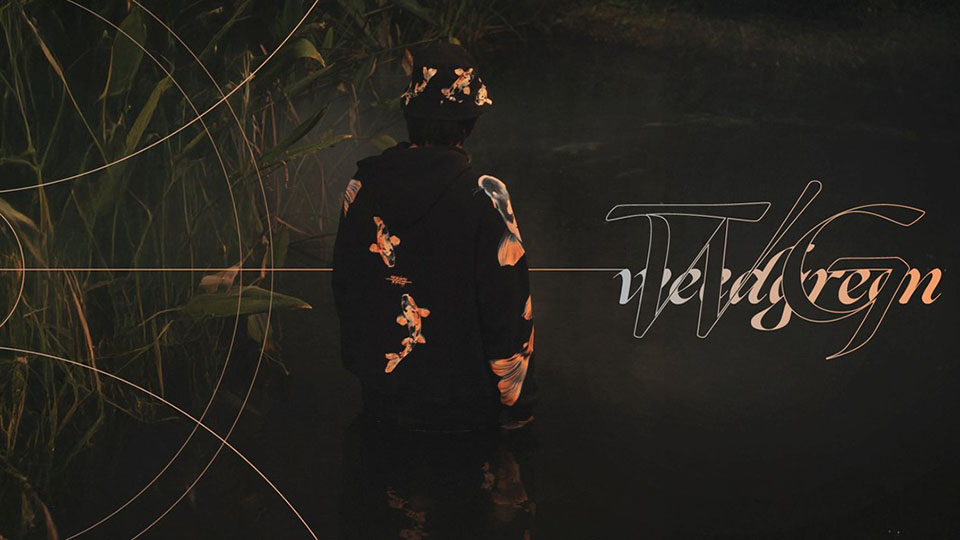Helping Small Shrimp Farmers with New Technology Tools for Increased, Sustainable Production in Viet Nam
Shrimp farming is precautious, needs labor, constant surveillance, and can create substantial pollution. Lam Nguyen and Trần Duy Phong both grew up on Shrimp farms and knew firsthand about the issues their family faced. In 2012, they co-founded Tepbac, a start-up offering combined software and hardware solutions to help shrimp farmers optimize their production, lower their costs, and limit pollution and carbon footprint. The company now employs 17 staff with an average age range of 26, is registering an international patent, looks to expand its reach inside the country, and globally, and enter fish aquaculture.
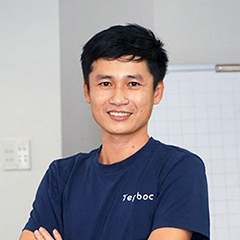
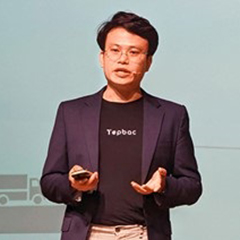
Lam was four years old when his father started farming shrimp. He remembered wandering around shrimp ponds, spending his summer vacations on the farm, and even learning how to swim with the shrimp. When Trần, the company’s CEO decided to found Tepbac, Lam followed his friend and classmate into the adventure and became his co-founder and Chief Business Development Officer.
Shrimp Aquaculture Challenges
Growing up, Lam and Trần became aware that many shrimp farmers were very poor and were burdened by several issues preventing them to sustain their farms. With shrimp ponds needing constant surveillance and shrimp farming is primarily done manually, farmers had to rely on hired help, raising their production costs. Unsustainable practices, mostly from overfeeding, triggered substantial pollution, and farmers struggled with farm management, cost and profits estimation, market prices, and financial flow. An additional hurdle was the input supply as farmers relied on local suppliers with restricted choice and no bargaining power on the price. According to Lam, there are numerous intermediaries in the shrimp value chain, and the price can double or triple from the farmer to the end user.
Tepbac Sustainable Aquaculture Technology for Shrimp Farming
Tepbac’s mission is to help address those issues, contribute to sustainable aquaculture, and traceable seafood, Lam explained. “We wanted to optimize the value chain.” Tepbac is the name of a small shrimp that live in strong flowing water and are vigorous jumper. They are very familiar to farmers in Vietnam. “We chose to call our company Tepbac because our solutions focus on shrimp farmers, and the philosophy of our business is solving challenges in the aquaculture sector, going forward, despite hurdles.” Farmext, Tepbac’s sustainable aquaculture technology software and hardware suite, addresses the entire shrimp farming ecosystem.
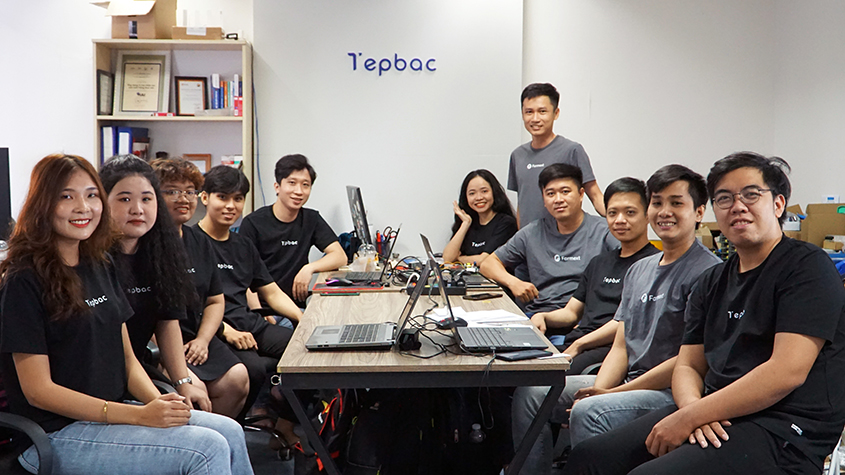
Shrimp Farming Environmental Impacts
Water quality is key in shrimp farming and particularly before the introduction of shrimp post-larvae. White-leg and black tiger shrimp are the two most produced types of shrimp in Vietnam and surrounding countries. While-leg shrimp can be harvested 100 days after their introduction in ponds. Shrimp farmers can make large profits from the business. “I remember when my parents had the shrimp farm, raising black tiger shrimp, for each US dollar invested in the shrimp pond, they would make a ten-fold profit after three months,” Lam said. The prosperous potential investment return pushed many people into shrimp farming, which, unfortunately, according to Lam, led to worrying environmental pollution, endangering biodiversity in the area.
Farmext Farm Management Software and Hardware
An Integrated Solution for Shrimp Farming
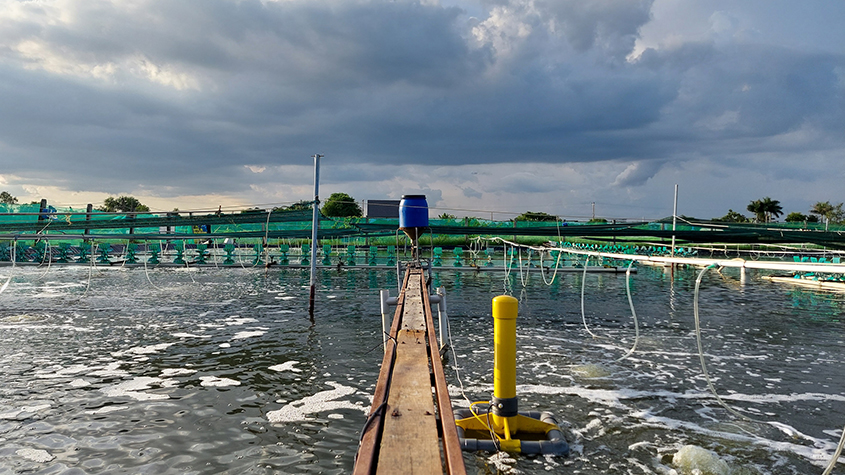
Farmext is a farm management solution, based on both software and hardware, helping farmers to automate operations. Sensors and other monitoring devices are installed on the farms, automating controls and farming processes, and managed through software installed on the farmers’ smartphones. The system includes real-time water monitoring. It regulates the oxygen level, delivers a warning signal in case of an issue, and automatically switches on an electrical device to adjust the oxygen level. The system also monitors the water temperature and Ph. An outer feeder adjusts the quantity of feed that the shrimp need, according to the water quality and condition. The systems avoid excess feed collecting at the bottom of the pond, which can reach 30 percent without proper monitoring. Feed cost account for about 50 percent of the total farming costs.
Cost-Efficient Farm Management App and Technologies
Lam estimates that farmers using Farmext farm management app can accrue their yearly benefit by USD 8,000 per pond by saving on labor, feed, and electrical costs. Remote operations through the control cabinet also save lives by avoiding deadly electrocutions when farmers have to operate their outdoor electrical switch manually during the rainy season. For some US 300, farmers can control all of their electrical devices remotely, Lam said.
Tepbac recently added an e-commerce function to Farmext where farmers can find devices, such as water monitoring, auto feeders, and remote control. The site allows them to connect with experts to seek advice and find the most appropriate farming techniques.
Farmext Aquaculture Monitoring System using IoT
Farmext uses the Internet of Things for real-time water monitoring, the outer feeder, and the control cabinet. The probes in the ponds are cleaned every five minutes, limiting the cleaning operations to twice a year for Ph. sensors and once a year for temperature sensors. The outer feeder gets the data from real-time water quality monitoring and adjusts the necessary feed quantity according to the quality of the water. The control cabinet is physically connected to all the electrical devices on the farm while other equipments are connected through the Cloud.
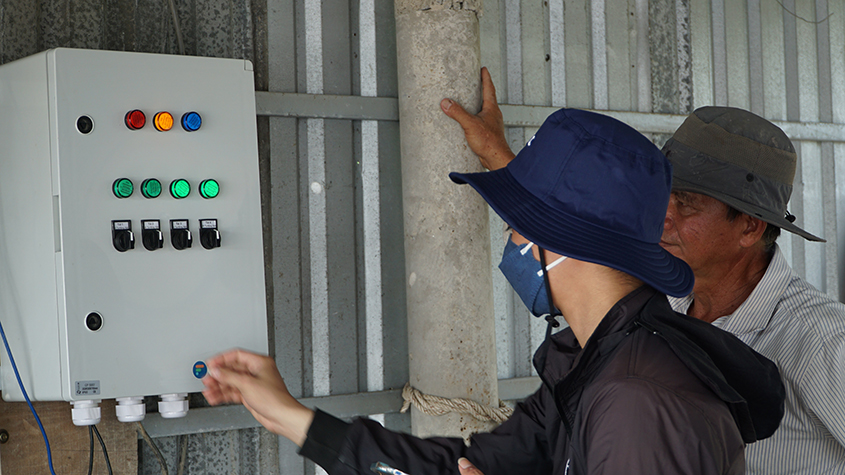
The system also allows farmers to calculate their operation costs and make financial projections. They can find information on Tepbac.com, an aquaculture media platform launched 10 years ago, including an AI-powered price index featuring shrimp prices in Vietnam in every province, and disease update in surrounding areas. Tepbac.com is among the top global aquaculture platform. The site links to an e-shop where farmers can buy necessary inputs at negotiated prices.
Smart Aquaculture System powered by AI for Improved Efficiency
According to Lam, farmers following Tepbac’s recommendations and procedures, including the diary requirement, receive a certificate of good practice, which can account for higher selling prices. Following all recommendations will also allow Tepbac, through its AI algorithms, to optimize farms’ operation and give updated recommendations so efficiency increases incrementally year after year. Improved efficiency will also earn farmers credit points against which they can borrow more money from Tepbac’s financial partners, and sell at higher prices to the company’s buying partners.
Over 5,000 ponds are now equipped with Farmext in Vietnam. The company focuses on helping small farmers, but its technology can be applied to intensive and extensive farming.
Reducing the Environmental Impact of Shrimp Farming
By preventing overfeeding of shrimp Tepbac helps reduce the environmental impact of shrimp farming, and by saving energy, reduces the carbon footprint of the industry. Maintaining optimum water quality and feed quantity ensures healthy shrimp, less susceptible to illnesses, which significantly reduces the amount of antibiotics used by the sector.
International Patent Protection for TÉP BAC Water Monitoring Invention
Tepbac applied for two patents in Vietnam on its real-time water monitoring device and is in the process of applying internationally through WIPO PCT. Intellectual property protection, Lam, said, is vitally important, increases the value of the company, and helped the startup attract venture capital.
Extending Tepbac Product Range to Fish Farming Technologies
In the next five years, the company plans on equipping some 100,000 farmers with their solution. Tepbac, Lam said, seeks to become the world leading company for aquaculture solutions. “People like you and I will be able to eat certified seafood that is safe and has no environmental impact.” The company is operating in Vietnam for the moment but has strategic partners in India, Malaysia, Cambodia, and Brazil.
Closer in time, Tepbac will roll out a financial solution to help farmers sell their shrimp at the best price, and facilitate access to credit. Some fish farms are already equipped with a tailored system and the company will further develop its fish farming technologies to expand to that sector. “Fish is the next target of our business model,” said Lam.



